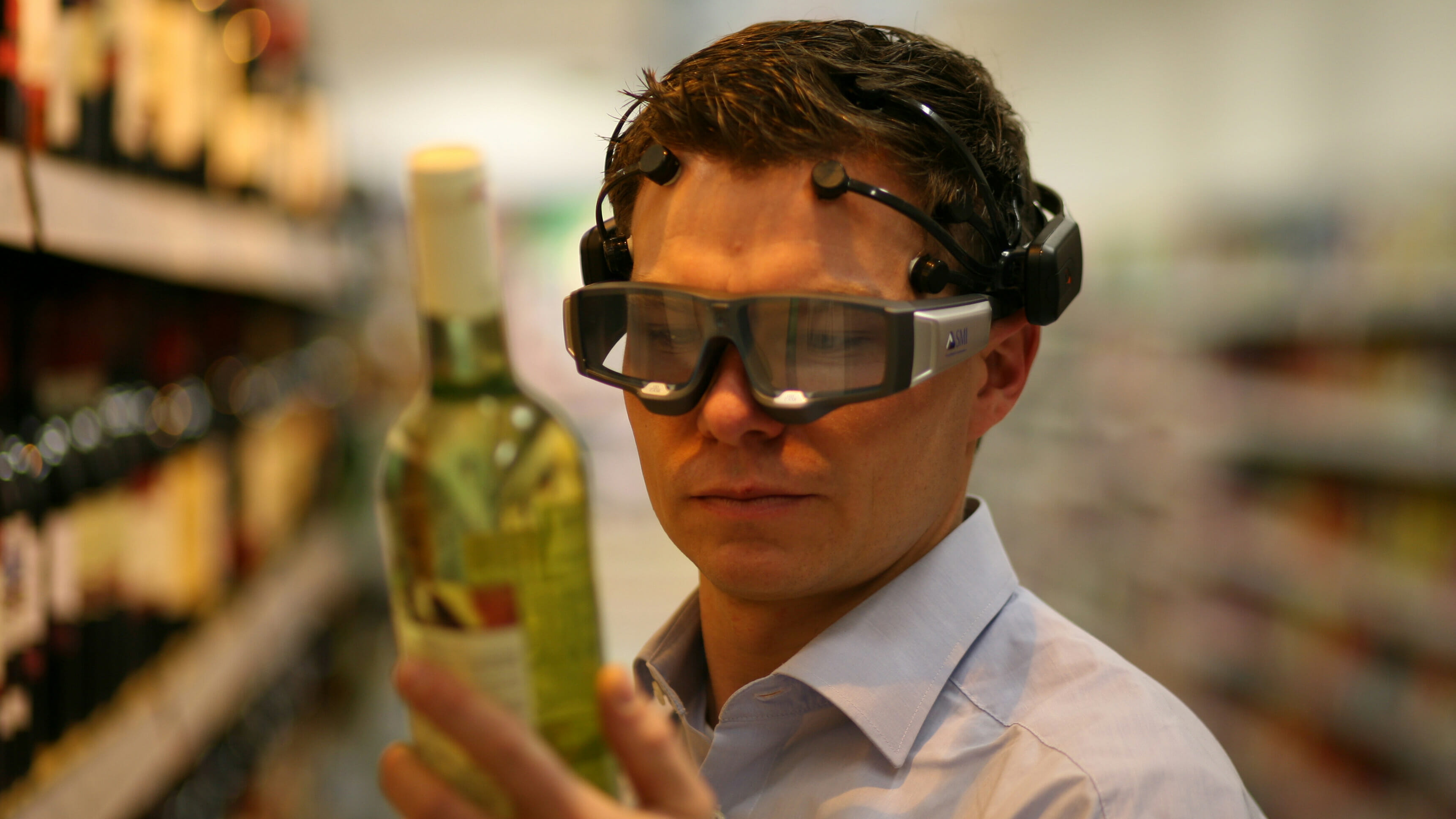
This column, On the Mind, is a series about the latest in cognitive science and neuroscience-related research that applies to our everyday lives. This biweekly series is for those interested in cutting-edge findings about the practical side of habits, memories, multitasking and the human-brain interface. What are the recent studies, and what is the context? See what science says and how you can apply it to your life.
![]()
The idea of “neuromarketing” to influence customers isn’t entirely new. Mindlab International, for instance, started looking at neural responses to products about a decade ago in the United Kingdom. However, only in the past few years has the technology become cheap enough for companies to embrace the technique and shift marketing dollars into neuroscience research.
Generally, neuroeconomics is focused on how individuals make choices, and neuromarketing is focused on how those choices can be influenced. About two years ago, the idea of neuromarketing took off as an actual framework for how to approach customers and use the technique effectively rather than theoretically.
In recent years, tech companies such as SalesBrain in San Francisco and Neuro-Insight in London have popped up to offer these services to advertisers. They use EEG and functional magnetic resonance imaging (fMRI) to measure responses through perspiration, heart rate, eye movement and brain activity. The Neuromarketing Science & Business Association, started in 2012, has more than 1,000 members in 91 countries that aim to create simple messages that “deliberately mix conscious recall with the unconscious” for advertisers.
Studies Say
In the past year, studies involving neuroeconomics and neuromarketing have looked at specific instances of brain reactivity, such as reactions to alcohol and cannabis marketing while sober and while intoxicated. According to the study, we react more to booze and pot ads when we’re sober, even among light and heavy users.
As scientists learn more about neuromarketing, they’re also testing their own methods to better study consumers. In a study released in February, for example, researchers in Sweden, Germany and the Netherlands tested eye-tracking software and found that some were not as effective as others and reported incorrect information sometimes.
Many common references to neuromarketing look back to Daniel Kahneman, recipient of the 2002 Nobel Prize in economics, as the metaphor master when it comes to describing the role of our reptilian brain while making decisions. As he puts it, the reptilian part of the brain — the oldest area responsible for instinct and survival — typically makes our decisions and focuses on avoiding pain.
Of course, as neuromarketing as become popular, columnists have argued against its efficacy as well, saying the studies that support it are often “abstract, ultra-focused and a long way from everyday experience.”
Key Takeaways
As the field continues to develop in complexity and nuance, a few basic ideas will remain solid and reliable.
1. Attention is linked to decisions.
Our reptilian brain is responsible for attention and decision-making, so if we pay attention to commercials or ads, we’re more likely to buy. In a study published in March, researchers looked at spatial attention with eye-tracking technology to understand decisions. “Decision making can be traced in the human oculomotor system well before choices are made,” they said.
2. We like to be captivated.
The reptilian brain wants to avoid pain more than gain pleasure. The best way to capture attention is to tap into pain points with the unconscious, appeal to innate selfishness, show importance with contrast, emphasize value in a tangible way, include a visual metaphor and strike an emotional chord.
3. Pricing is also marketing.
When there are three price offers, the middle one is the option the company wants consumers to choose. In a marketing strategy study used by The Economist, Dan Ariely of Duke University talked about magazine subscriptions offered at three prices: a $59 option for online only, a $125 option for print only, and a $125 option for print and online. In a TED talk, he explained that consumers picked the online-print option because it seemed like a good deal. When they were offered print-only or online-only, they picked the online-only option that was cheaper.
4. We like scarcity and special things.
Consumers react strongly to a limited edition of an item, especially when it’s popular. Think about airlines — when only a few tickets are left at a lower price, it prompts people to buy them as soon as possible. The technique is particularly effective when there used to be more products, but due to popularity, there are only a few left. It’s less effective when there are only two options but the product doesn’t seem desired.
5. We like freebies and favors.
Marketers have played on this strategy for some time. They give away free chocolates in luxury stores, which entices people to spend on expensive items. It also happens when a restaurant server brings mints with the check. People tip 3.3 percent higher than normal with one mint and 20 percent more with two mints.
And don’t forget: We like stories.
When we can associate with a situation, we’re more likely to buy. We value stories over statistics, in particular, because individual examples stick in our minds, say psychologists Christopher Chabris and Daniel Simons. Stories help us believe in a situation similar to ours, especially when more emotional. Marketers often share their “origin” stories and a “before and after” tales to help buyers relate to a pain point that needs to be solved. A November 2016 study of people watching video commercials showed that narrative-focused videos garnered a better response.
Image: SMI ETG Neuromarketing, Flickr, CC-BY
Carolyn Crist is a freelance health and science journalist for regional and national publications. She writes the Escape Artist column for Paste Travel, On the Mind column for Paste Science and Stress Test column for Paste Health.